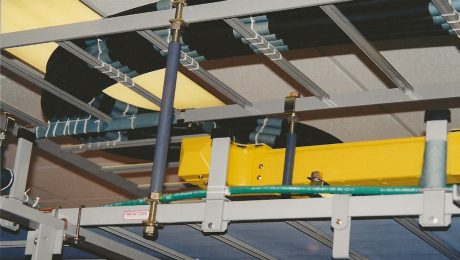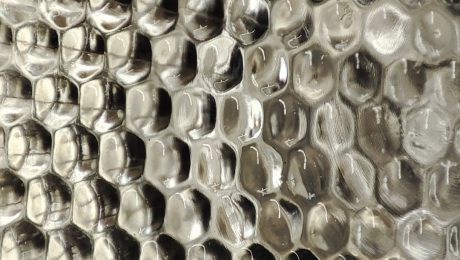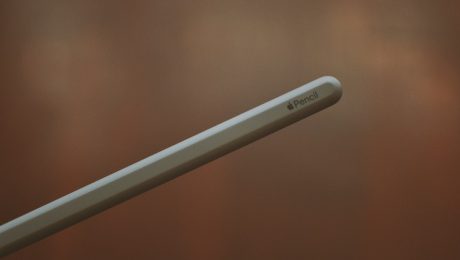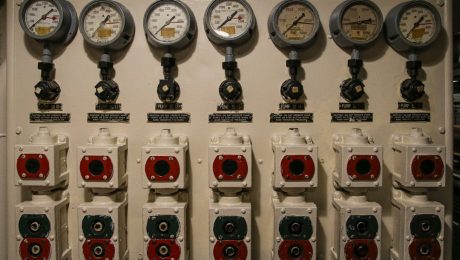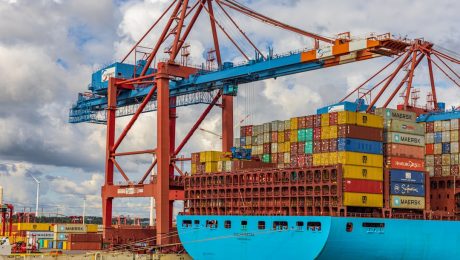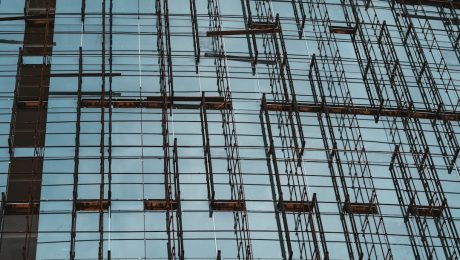In today’s increasingly noisy world, effective sound control is paramount. Whether you’re designing a recording studio, a concert hall, an office space, or even a residential building, minimizing noise pollution is crucial for productivity, comfort, and overall well-being. Acoustic steel profile systems offer a robust and versatile solution for achieving superior sound control, providing a high level of performance and durability.
Understanding the Mechanics of Acoustic Steel Profile Systems
Acoustic steel profile systems are engineered frameworks designed to create sound-dampening barriers. Unlike traditional methods, these systems leverage the properties of steel, combined with specialized acoustic materials, to effectively absorb and block sound waves. The steel profiles themselves provide a rigid structure, preventing vibrations from transmitting through walls or ceilings. This structural integrity is crucial for maintaining the effectiveness of the acoustic insulation materials used within the system. The profiles often incorporate features such as perforations or specific geometries designed to further enhance sound absorption. The system’s design considers the frequency range of sound waves to be attenuated, optimizing the system for specific noise control requirements.
The Diverse Applications of Acoustic Steel Profile Systems
The versatility of acoustic steel profile systems makes them suitable for a wide range of applications. In commercial settings, they are commonly used in:
- Recording studios and broadcast facilities: Creating sound-isolated spaces essential for high-quality audio recording and mixing.
- Offices and workplaces: Reducing noise distractions and improving employee concentration and productivity.
- Industrial settings: Mitigating hazardous noise levels to protect workers’ hearing.
- Cinemas and theaters: Enhancing sound quality and minimizing external noise interference.
- Hospitals and healthcare facilities: Creating quiet zones for patient recovery and staff communication.
Residential applications also benefit significantly, including:
- Home theaters: Delivering an immersive cinematic experience free from external noise.
- Music rooms: Providing a dedicated space for musical practice without disturbing neighbors.
- Apartments and condos: Improving sound insulation between units.
Choosing the Right Acoustic Steel Profile System: Factors to Consider
Selecting the appropriate acoustic steel profile system requires careful consideration of several factors:
- Frequency range: Different systems are optimized for different frequency ranges, so understanding the predominant noise frequencies is crucial.
- Sound Transmission Class (STC) rating: This rating indicates the system’s ability to block airborne sound. Higher STC ratings represent better sound insulation.
- Noise Reduction Coefficient (NRC) rating: This rating measures a material’s ability to absorb sound. A higher NRC indicates better sound absorption.
- Installation requirements: Consider the structural capabilities of the building and the ease of installation for the chosen system.
- Budget: Acoustic steel profile systems vary in cost, depending on their complexity and materials.
- Aesthetics: While functionality is paramount, the aesthetic integration of the system within the overall design should also be considered.
Installation and Maintenance of Acoustic Steel Profile Systems
Proper installation is critical to the effectiveness of an acoustic steel profile system. It usually involves a team of skilled professionals experienced in acoustic construction. The process typically includes:
- Careful planning and design: This ensures the system is correctly sized and positioned to address the specific acoustic challenges.
- Precise fabrication and cutting of the steel profiles: Ensuring a perfect fit and minimizing gaps.
- Secure fastening and attachment: Using appropriate fixings to ensure structural stability and prevent vibration transmission.
- Installation of acoustic insulation materials: Filling the cavities within the steel framework with sound-absorbing materials.
- Careful sealing of joints and gaps: Preventing sound leakage around the edges of the system.
Maintenance is generally minimal, but regular inspections can help identify and address any potential issues early on, ensuring the system’s long-term effectiveness.
The Benefits of Acoustic Steel Profile Systems: A Summary
Investing in acoustic steel profile systems offers numerous advantages:
- Superior sound insulation: Effectively reduces noise transmission, creating quieter and more comfortable environments.
- Enhanced sound quality: In applications like recording studios, the systems contribute to improved acoustic performance.
- Durability and longevity: Steel provides a robust and long-lasting framework for the system.
- Versatility: Suitable for a wide range of applications and building types.
- Improved productivity and well-being: Reduced noise levels enhance focus, concentration, and overall comfort.
- Compliance with building codes: Many jurisdictions have noise control regulations that these systems can help meet.
In conclusion, acoustic steel profile systems represent a sophisticated and effective solution for achieving superior sound control in diverse environments. By carefully considering the factors outlined above and engaging experienced professionals, you can ensure the successful implementation of a system that meets your specific needs and contributes to a quieter, more productive, and more comfortable space.
Tags: acoustic steel profiles, soundproofing, noise control, steel profile systems, acoustic design
Superalloy steels, renowned for their exceptional high-temperature strength, creep resistance, and oxidation resistance, are critical components in numerous high-performance applications. These advanced materials are engineered to withstand extreme conditions, pushing the boundaries of what’s possible in various industries. This comprehensive guide delves into the fascinating world of superalloy steels, exploring their unique properties and diverse applications.
1. The Unique Properties of Superalloy Steels: A Foundation of Strength
The remarkable performance of superalloys stems from their unique metallurgical composition and microstructure. Typically based on nickel, cobalt, or iron, these alloys are meticulously crafted with additions of elements like chromium, molybdenum, tungsten, aluminum, and titanium. These additions significantly enhance the material’s properties:
- High-Temperature Strength: Superalloys retain their strength at significantly higher temperatures than conventional steels, making them ideal for applications involving intense heat.
- Creep Resistance: Creep, the gradual deformation under sustained stress at high temperatures, is minimized in superalloys due to their unique microstructure, which includes the formation of strengthening precipitates.
- Oxidation Resistance: A protective oxide layer forms on the surface of superalloys, protecting them from corrosion and oxidation even at elevated temperatures.
- Fatigue Resistance: Superalloys exhibit excellent resistance to fatigue failure, ensuring longevity under cyclical loading conditions.
These combined properties make superalloy steels indispensable in demanding environments where conventional materials would fail.
2. Aerospace Applications: Reaching for the Skies with Superalloys
The aerospace industry is a major consumer of superalloy steels. Their ability to withstand extreme temperatures and stresses makes them crucial for components operating in the harsh conditions of jet engines and gas turbines. Key applications include:
- Turbine Blades and Vanes: Superalloys are the material of choice for turbine blades and vanes, the heart of gas turbine engines. They endure incredibly high temperatures and centrifugal forces generated during operation.
- Combustion Chambers: The combustion chambers of jet engines are subjected to intense heat and pressure. Superalloys provide the necessary strength and durability to withstand these demanding conditions.
- Afterburners: In afterburners, where fuel is injected to increase thrust, superalloys are essential for handling the extremely high temperatures generated.
- Rocket Engine Components: In rocket propulsion systems, superalloys are used in components that experience intense heat and pressure during launch and flight.
The lightweight yet robust nature of superalloys is paramount to efficient and safe aerospace operations.
3. Power Generation: Fueling Progress with Superalloy Technology
Beyond aerospace, the power generation sector relies heavily on superalloys for efficient and reliable operation. Their high-temperature capabilities are critical in:
- Gas Turbine Blades in Power Plants: Similar to aerospace applications, superalloys are used in the gas turbine blades of power plants, ensuring efficient energy conversion.
- Fossil Fuel Power Plants: In fossil fuel power plants, superalloys are used in components exposed to high temperatures and corrosive environments.
- Nuclear Power Plants: While less common, some components in nuclear power plants utilize superalloys for their resistance to radiation and high temperatures.
The reliable performance of superalloys in power generation contributes to a stable and efficient energy supply.
4. Manufacturing Processes: Shaping the Strength of Superalloys
The manufacturing of superalloys is a complex process requiring specialized techniques due to their high melting points and tendency to form brittle intermetallic phases. Common methods include:
- Investment Casting: This process allows for the creation of complex shapes with high precision, ideal for turbine blades.
- Powder Metallurgy: This technique involves blending metal powders, pressing them into shape, and then sintering them at high temperatures, leading to improved material properties.
- Directional Solidification: This method creates a microstructure with aligned grains, enhancing creep resistance.
- Forging: Forging helps to refine the grain structure and improve mechanical properties.
These advanced manufacturing techniques are crucial for producing superalloys with the desired microstructure and mechanical properties.
5. Future Trends and Innovations in Superalloy Steel Technology
Research and development continue to push the boundaries of superalloy technology. Future trends include:
- Development of Novel Alloy Compositions: Researchers are constantly exploring new alloy compositions to improve high-temperature strength, creep resistance, and oxidation resistance.
- Advanced Manufacturing Techniques: Additive manufacturing (3D printing) is showing promise for creating complex superalloy components with improved efficiency and reduced material waste.
- Coatings and Surface Treatments: Protective coatings are being developed to further enhance the oxidation and corrosion resistance of superalloys.
- Sustainable Manufacturing Practices: Efforts are underway to make the manufacturing process of superalloys more environmentally friendly.
These advancements will lead to even more efficient and durable superalloy components for a wide range of applications.
Superalloy steels are truly remarkable materials, their exceptional properties and diverse applications shaping modern technology. As research continues to advance, we can expect even more innovative uses for these powerful and versatile materials.
Tags: superalloy steel, superalloy applications, nickel-based superalloys, aerospace applications, high-temperature alloys
body {
font-family: sans-serif;
line-height: 1.6;
}
h1, h2, h3 {
color: #0056b3;
}
Marine environments present unique challenges to piping systems, demanding rigorous safety protocols to prevent catastrophic failures. From the smallest fishing vessel to the largest oil tanker, the integrity of piping systems is paramount for both operational efficiency and crew safety. This comprehensive guide delves into the critical aspects of ensuring pipe safety in marine applications.
1. Material Selection: The Foundation of Marine Pipe Safety
Choosing the right pipe material is the cornerstone of a safe and long-lasting marine piping system. The selection process must consider several factors, including the transported fluid, environmental conditions, and pressure requirements. Common materials include stainless steel (offering excellent corrosion resistance), carbon steel (cost-effective but susceptible to corrosion), and various alloys designed to withstand specific corrosive agents. For example, duplex stainless steels are frequently used in seawater applications due to their superior resistance to chloride-induced pitting and crevice corrosion. The correct grade of material must be specified, taking into account the expected service temperature and pressure. Incorrect material selection can lead to premature failure, leaks, and potentially hazardous situations.
2. Corrosion Prevention: A Constant Battle Against the Elements
Marine environments are notoriously corrosive, with saltwater, humidity, and airborne pollutants constantly attacking pipe surfaces. Corrosion prevention is therefore crucial. Several strategies are employed, including:
- Protective Coatings: Applying coatings like epoxy, polyurethane, or zinc-rich primers creates a barrier between the pipe and the corrosive environment.
- Cathodic Protection: This electrochemical process uses sacrificial anodes or impressed current to protect the pipe from corrosion.
- Regular Inspections: Frequent visual inspections and non-destructive testing (NDT) methods, such as ultrasonic testing (UT) and magnetic particle inspection (MPI), help detect early signs of corrosion.
- Material Selection (as discussed above): Choosing corrosion-resistant materials is a proactive approach to minimizing corrosion issues.
A robust corrosion prevention plan is essential to extend the lifespan of marine piping systems and prevent costly repairs or replacements.
3. Regular Inspection and Maintenance: Proactive Safety Measures
Regular inspections are not merely a regulatory requirement; they are a critical component of proactive safety management. A comprehensive inspection program should include:
- Visual Inspections: Regularly checking for signs of corrosion, leaks, damage, or deterioration.
- Non-Destructive Testing (NDT): Utilizing techniques like UT, MPI, radiographic testing (RT), and liquid penetrant testing (LPT) to detect internal and external flaws.
- Pressure Testing: Periodically testing the pipe’s ability to withstand pressure to identify weaknesses.
- Hydrostatic Testing: Filling the pipe system with water under pressure to detect leaks.
A well-documented inspection and maintenance schedule ensures early detection of problems, preventing minor issues from escalating into major safety hazards.
4. Emergency Procedures and Response: Preparedness for the Unexpected
Despite preventative measures, accidents can occur. Having well-defined emergency procedures in place is crucial for mitigating the consequences of pipe failures. This includes:
- Leak Detection and Isolation: Procedures for quickly identifying and isolating leaks to prevent further damage and environmental contamination.
- Emergency Shutdown Procedures: Clear instructions for safely shutting down the affected system to prevent further incidents.
- Personnel Safety Protocols: Procedures to ensure the safety of personnel during emergencies, including evacuation plans and emergency response training.
- Spill Response Plans: Strategies for containing and cleaning up spills of hazardous materials.
Regular drills and training are essential to ensure that personnel are familiar with and capable of executing these procedures effectively.
5. Regulatory Compliance and Standards: Adherence to Best Practices
Marine piping systems are subject to stringent regulatory requirements and industry standards to ensure safety and environmental protection. Compliance with these regulations is not optional; it’s mandatory. Key standards and regulations include:
- International Maritime Organization (IMO) regulations: These regulations govern the design, construction, and operation of ships, including their piping systems.
- American Bureau of Shipping (ABS) standards: ABS provides classification and certification services for ships and offshore structures, setting strict standards for piping systems.
- Det Norske Veritas (DNV) standards: DNV is another major classification society with its own set of standards for marine piping systems.
- Local and national regulations: Specific regulations may apply depending on the flag state of the vessel or the location of the offshore installation.
Staying abreast of these regulations and ensuring full compliance is essential for maintaining a safe and legally compliant operation.
By adhering to these guidelines and prioritizing safety, marine operators can significantly reduce the risk of pipe failures and ensure the continued safe and efficient operation of their vessels and offshore installations.
SEO Tags:
marine pipe safety, offshore piping, shipbuilding safety, pipeline integrity, corrosion prevention
The Hot Rolling Process: From Ingot to Flat Bar
Hot rolled flat bars begin their life as a molten metal ingot, typically steel. This ingot is then subjected to a series of rigorous processes to achieve the desired shape and properties. The initial step involves heating the ingot to an extremely high temperature, often exceeding 1100°C (2012°F), making it malleable and easily deformable. This heated ingot is then passed through a series of heavy-duty rollers, progressively reducing its thickness and shaping it into a flat bar. The high temperature allows for significant deformation without fracturing the metal, resulting in a stronger and more durable final product. The continuous rolling process ensures a consistent thickness and width throughout the bar’s length. After rolling, the bar undergoes controlled cooling to minimize internal stresses and achieve the desired mechanical properties.
Mechanical Properties and Composition of Hot Rolled Flat Bars
The mechanical properties of hot rolled flat bars are largely determined by the steel grade used. Commonly used steel grades include low carbon steel, medium carbon steel, and high carbon steel, each offering a unique balance of strength, ductility, and hardness. Low carbon steel is known for its excellent weldability and formability, while medium carbon steel provides a good combination of strength and ductility. High carbon steel boasts superior strength but at the cost of reduced ductility and weldability. The composition of the steel also plays a crucial role, with alloying elements such as manganese, silicon, and chromium influencing the final properties. These elements can enhance strength, hardenability, and corrosion resistance. Understanding the specific mechanical properties, including tensile strength, yield strength, elongation, and hardness, is crucial for selecting the appropriate bar for a given application.
Applications of Hot Rolled Flat Bars: Versatility in Action
Hot rolled flat bars exhibit exceptional versatility and find applications across numerous industries. Their strength, durability, and relative affordability make them ideal for structural components in construction, such as beams, columns, and reinforcing bars. They are also extensively used in the manufacturing sector for producing various parts and components, including automotive parts, machinery components, and tools. The agricultural industry utilizes hot rolled flat bars in the construction of farm equipment and machinery. Furthermore, these bars serve as a base material for further processing, such as machining, welding, and forming, enabling the creation of complex and intricate parts. Their adaptability makes them a cost-effective solution for a wide range of applications.
Advantages and Disadvantages of Hot Rolled Flat Bars
Advantages: Hot rolled flat bars offer several key advantages. Their relatively low cost compared to other steel products makes them economically attractive. The high-temperature rolling process enhances their strength and durability, providing excellent structural integrity. The process also imparts good dimensional accuracy, though tolerances may be slightly larger than cold-rolled bars. Their superior weldability simplifies fabrication processes. Finally, the large size range available offers flexibility in design and application.
Disadvantages: While offering significant advantages, hot rolled flat bars also have some limitations. The surface finish is typically rougher compared to cold-rolled bars, potentially requiring further processing for applications demanding a smoother surface. The higher temperature processing can lead to slight dimensional variations and scale formation on the surface. Lastly, the inherent properties of the steel grade used influence the ultimate suitability for specific applications, necessitating careful selection based on the required strength, ductility, and other mechanical characteristics.
Choosing the Right Hot Rolled Flat Bar: A Guide to Selection
Selecting the appropriate hot rolled flat bar requires careful consideration of several factors. The intended application dictates the necessary mechanical properties, such as tensile strength and yield strength. The required dimensions, including length, width, and thickness, must be specified. The surface finish requirements influence the choice between a directly usable bar or one requiring further processing. The steel grade plays a crucial role in determining the balance between strength, ductility, and weldability. Finally, cost considerations are essential, balancing the required properties with budgetary constraints. Consulting with a material specialist or supplier can provide valuable guidance in making the optimal choice.
SEO Tags:
- Hot rolled flat bars
- Steel flat bars
- Hot rolling process
- Steel bar applications
- Mechanical properties of steel
Steel, a ubiquitous material in modern construction, manufacturing, and infrastructure, exists in various forms. Understanding the differences between raw and finished steel is crucial for selecting the appropriate material for any given project. This detailed comparison will illuminate the key distinctions, helping you make informed decisions.
1. The Birth of Steel: Understanding Raw Steel
Raw steel, also known as pig iron or molten steel, is the initial product of the steelmaking process. It’s a direct result of smelting iron ore in a blast furnace, and it’s far from ready for practical applications. Raw steel contains impurities like carbon, manganese, silicon, phosphorus, and sulfur, significantly impacting its properties. These impurities make raw steel brittle, weak, and unsuitable for most engineering purposes. Its high carbon content makes it hard and difficult to shape. The process of removing these impurities and refining the steel is crucial in transforming it into a usable material. Think of raw steel as the unrefined ore – it possesses the potential but lacks the refinement needed for practical use.
2. The Transformation: Refining Raw Steel into Finished Steel
The journey from raw steel to finished steel involves several crucial steps, broadly categorized into primary and secondary processing. Primary processing focuses on removing impurities and adjusting the chemical composition to achieve desired properties. This often involves processes like basic oxygen furnace (BOF) or electric arc furnace (EAF) steelmaking, where oxygen is used to remove carbon and other impurities. Secondary processing further refines the steel, controlling its chemical composition and microstructure. This stage might include vacuum degassing, ladle refining, and continuous casting to ensure homogeneity and desired properties.
3. Hot-Rolled vs. Cold-Rolled Steel: Two Major Finished Steel Types
Once the steel is refined, it undergoes shaping processes. Two dominant methods are hot rolling and cold rolling. Hot-rolled steel is processed at high temperatures, resulting in a stronger, more durable, but less precise product. The high temperatures allow for easier shaping and larger dimensional changes, making it suitable for structural applications where high strength is prioritized over surface finish. In contrast, cold-rolled steel is processed at room temperature, resulting in a smoother, more precise, and dimensionally accurate product. The cold working process increases its strength and hardness but reduces its ductility. Cold-rolled steel is preferred for applications requiring a fine surface finish, such as automotive body panels or appliances.
4. Mechanical Properties: A Head-to-Head Comparison
The mechanical properties of raw and finished steel differ significantly. Raw steel is inherently brittle and weak due to the presence of impurities. Finished steel, on the other hand, exhibits a wide range of mechanical properties depending on its grade and processing. These properties include tensile strength, yield strength, ductility, hardness, and toughness. Finished steel, particularly cold-rolled steel, generally possesses higher tensile strength and hardness compared to hot-rolled steel. However, hot-rolled steel often exhibits better ductility and toughness, making it more resistant to fracture under stress. The choice between hot-rolled and cold-rolled steel depends heavily on the specific application’s requirements.
5. Applications: Where Each Type Shines
The distinct properties of raw and finished steel dictate their applications. Raw steel, due to its impurities and lack of refined properties, has limited direct applications. It primarily serves as an intermediate product in the steelmaking process. Finished steel, however, finds widespread use across numerous industries. Hot-rolled steel is commonly used in construction (beams, columns, I-beams), shipbuilding, and heavy machinery due to its strength and weldability. Cold-rolled steel is favored in automotive manufacturing, appliance production, and precision engineering applications where dimensional accuracy and surface finish are paramount. The versatility of finished steel is a testament to the transformative power of the steelmaking process.
In conclusion, understanding the differences between raw and finished steel is essential for selecting the appropriate material for your project. From the initial smelting process to the final rolled product, the journey of steel highlights the importance of refining and processing to achieve the desired properties and applications. Choosing between hot-rolled and cold-rolled steel depends entirely on the specific needs of your application, balancing factors like strength, precision, and surface finish.
SEO Tags: raw steel, finished steel, hot-rolled steel, cold-rolled steel, steel properties
The integrity of pipes is paramount across numerous industries, from oil and gas to water management and construction. A single failure can lead to significant financial losses, environmental damage, and even loss of life. Therefore, robust and comprehensive pipe product quality control systems are not just desirable – they are absolutely essential. This blog post explores the key aspects of these systems, providing a detailed understanding of the processes involved in ensuring superior pipe quality and safety.
1. Ensuring Dimensional Accuracy: The Foundation of Pipe Integrity
Dimensional accuracy forms the bedrock of pipe quality. Deviations from specified dimensions can compromise the pipe’s structural strength, its ability to fit correctly within a system, and its overall performance. Quality control in this area involves meticulous measurements at various stages of production. This includes:
- Regular checks using calibrated measuring instruments: Vernier calipers, micrometers, and laser measurement systems are employed to ensure that the outer diameter, inner diameter, wall thickness, and length of the pipe conform precisely to the design specifications. Statistical Process Control (SPC) charts are often used to monitor trends and identify potential issues early on.
- Straightness and roundness testing: Pipes must be straight and round to ensure consistent flow and prevent stress concentrations. Specialized equipment is used to assess these parameters, detecting any deviations that could impact performance.
- End-face inspection: The ends of the pipes must be properly finished to ensure a leak-free connection. Inspection involves checking for burrs, imperfections, and ensuring the correct bevel angle for welding.
2. Rigorous Material Testing: Verifying Raw Material Quality
The quality of the raw materials used in pipe manufacturing directly impacts the final product’s performance. Thorough material testing is crucial to ensure that the chosen materials meet the required specifications and possess the necessary properties for the intended application. This typically involves:
- Chemical composition analysis: Spectrographic analysis verifies that the chemical composition of the raw materials (e.g., steel, plastic, etc.) aligns with the specified standards. This is crucial for ensuring the material’s strength, corrosion resistance, and other critical properties.
- Mechanical property testing: Tests such as tensile strength, yield strength, elongation, and hardness are conducted to assess the material’s ability to withstand stress and strain. These tests ensure that the pipe can handle the expected pressures and loads.
- Non-destructive testing (NDT) of raw materials: Methods like ultrasonic testing or magnetic particle inspection can be used to detect flaws or defects within the raw materials before they are processed into pipes, preventing the use of substandard materials.
3. Pressure Testing: Validating Pipe Strength and Integrity
Pressure testing is a critical step in verifying the pipe’s ability to withstand the operating pressures it will encounter in its intended application. This involves subjecting the pipe to a pressure significantly higher than its working pressure to identify any weaknesses or leaks. Different testing methods exist, including:
- Hydrostatic testing: This involves filling the pipe with water and applying pressure. Leaks are detected visually or with specialized leak detection equipment.
- Pneumatic testing: This uses compressed air instead of water. It is faster but requires careful monitoring to prevent potential hazards.
- Burst testing: This involves applying pressure until the pipe fails. This destructive test provides data on the pipe’s ultimate strength and burst pressure.
4. Non-Destructive Testing (NDT): Detecting Hidden Flaws
NDT techniques are employed to detect internal flaws and defects in the pipe without causing damage. These methods are crucial for ensuring the long-term reliability and safety of the pipe. Common NDT methods include:
- Ultrasonic testing (UT): Uses sound waves to detect internal flaws like cracks, voids, and inclusions.
- Radiographic testing (RT): Uses X-rays or gamma rays to create images of the pipe’s internal structure, revealing any defects.
- Magnetic particle testing (MT): Detects surface and near-surface flaws in ferromagnetic materials.
- Eddy current testing (ET): Detects surface and subsurface flaws in conductive materials.
5. Traceability Systems: Maintaining a Clear Chain of Custody
A robust traceability system is essential for tracking the pipe throughout its entire lifecycle, from raw material sourcing to final installation. This enables identification of the source of any potential defects and facilitates prompt corrective actions. Key elements of a traceability system include:
- Unique identification numbers: Each pipe is assigned a unique identifier that can be tracked throughout the production process and beyond.
- Detailed production records: Comprehensive records are maintained, documenting all aspects of the manufacturing process, including material used, testing results, and inspection reports.
- Digital databases: Digital databases store all traceability information, providing easy access to the history of each pipe.
- Batch tracking: Allows for tracking of entire batches of pipes, facilitating efficient recall procedures if necessary.
Implementing comprehensive pipe product quality control systems is crucial for ensuring the safety, reliability, and longevity of pipe infrastructure. By adhering to rigorous standards and employing advanced testing techniques, manufacturers can significantly reduce the risk of failures and maintain the highest levels of quality.
SEO-Friendly Tags:
- Pipe Quality Control
- Pipe Inspection
- Non-Destructive Testing (NDT) Pipes
- Pipe Manufacturing Quality Assurance
- Pressure Testing Pipes
In today’s rapidly evolving business landscape, stagnation is a death sentence. Organizations that thrive are those that embrace a culture of continuous improvement – a mindset that prioritizes ongoing learning, adaptation, and optimization. This isn’t just about incremental changes; it’s a fundamental shift in organizational philosophy that permeates every level and aspect of the business. This post will delve into the key elements of building and maintaining a thriving culture of continuous improvement.
1. Defining Continuous Improvement: More Than Just Efficiency
Continuous improvement, often referred to as Kaizen (a Japanese term meaning “change for the better”), is far more than simply boosting efficiency. It’s a holistic approach that encompasses all aspects of an organization, from product development and customer service to internal processes and employee well-being. It’s about identifying areas for improvement, no matter how small, and implementing changes to create a more effective, efficient, and ultimately, more satisfying work environment. This involves a systematic approach to problem-solving, utilizing data-driven insights to identify root causes and implement sustainable solutions. It’s not a one-time project but a continuous cycle of improvement, learning, and adaptation.
2. Fostering a Culture of Open Communication and Feedback
A culture of continuous improvement cannot exist without open communication and a willingness to receive and act upon feedback. This requires creating a safe space where employees feel comfortable sharing ideas, concerns, and suggestions without fear of retribution. Implementing regular feedback mechanisms, such as employee surveys, suggestion boxes, and one-on-one meetings, is crucial. Furthermore, leadership must actively solicit and respond to feedback, demonstrating a genuine commitment to improvement. Transparency in decision-making processes further fosters trust and encourages participation from all levels of the organization. This creates a collaborative environment where everyone feels empowered to contribute to the ongoing improvement journey.
3. Embracing Data-Driven Decision Making
Effective continuous improvement relies heavily on data. By tracking key performance indicators (KPIs), organizations can identify areas needing attention and measure the impact of implemented changes. This data-driven approach ensures that improvements are not based on assumptions but on concrete evidence. Utilizing tools like dashboards, analytics platforms, and process mapping software helps visualize data and identify trends, leading to more informed decisions. Regular data analysis sessions should be incorporated into the workflow, allowing teams to review progress, identify bottlenecks, and adjust strategies accordingly. This ensures that improvements are not only implemented but also effectively monitored and optimized over time.
4. Empowering Employees at All Levels
Continuous improvement is not the sole responsibility of management; it requires the active participation of every employee. Empowering employees to identify and address issues within their own areas of expertise is crucial. This involves providing them with the necessary training, tools, and autonomy to make decisions and implement changes. Delegating responsibility and fostering a sense of ownership encourages employees to take initiative and contribute proactively to the improvement process. Regular training programs focused on problem-solving, process improvement methodologies (like Lean and Six Sigma), and data analysis skills are vital for empowering employees to effectively participate in continuous improvement initiatives.
5. Measuring and Celebrating Successes
While continuous improvement is an ongoing process, it’s essential to recognize and celebrate successes along the way. Regularly tracking progress and acknowledging achievements boosts morale and reinforces the value of continuous improvement efforts. This can involve celebrating milestones, recognizing individual contributions, and sharing success stories across the organization. Publicly acknowledging achievements not only motivates employees but also inspires others to participate more actively. Regularly reviewing progress against established goals and celebrating even small wins creates a positive feedback loop, encouraging continued engagement and commitment to the continuous improvement journey.
By implementing these strategies, organizations can cultivate a culture of continuous improvement that fosters innovation, efficiency, and employee engagement. Remember, continuous improvement is not a destination but a journey—one that requires consistent effort, commitment, and a willingness to adapt and learn.
SEO Tags:
- Continuous Improvement
- Kaizen
- Lean Management
- Organizational Culture
- Process Improvement
body {
font-family: sans-serif;
line-height: 1.6;
}
h1, h2, h3 {
color: #333;
}
img {
max-width: 100%;
height: auto;
}
Wind turbines, the silent giants of renewable energy, rely on intricate support systems to harness the power of the wind. While the blades themselves are visually striking, the unseen infrastructure supporting them is equally crucial for efficient and reliable operation. This post delves into the complexities of wind turbine blade support systems, exploring their design, materials, maintenance, and future innovations.
1. The Foundation: Understanding the Nacelle and Hub Assembly
The journey of wind energy begins at the nacelle, a large housing unit situated atop the tower. Inside this crucial component resides the gearbox, generator, and the hub – the central point where the blades connect. The hub assembly is the primary support structure for the blades, transferring the immense forces generated by the rotating blades to the rest of the turbine. It’s a complex system of bearings, shafts, and housings, designed to withstand significant loads, both static (due to blade weight) and dynamic (from wind forces and centrifugal effects). The materials used are typically high-strength steel alloys, chosen for their durability and resistance to fatigue under cyclic loading. Precise manufacturing and rigorous quality control are paramount in ensuring the longevity and safety of this critical component.
2. Blade Pitch Systems: Controlling the Angle of Attack
Wind turbine blades don’t simply rotate at a fixed angle. To optimize energy capture and protect the turbine during high-wind events, sophisticated blade pitch systems are employed. These systems allow for the adjustment of the angle of attack of each blade. Hydraulic or electric actuators are commonly used to precisely control the pitch angle, which is crucial for maximizing energy output across varying wind speeds. In high winds, the blades are pitched to a feathering position, reducing the surface area exposed to the wind and preventing damage. The support system for the pitch mechanism must be robust enough to handle the forces involved, often incorporating highly engineered bearings and precision gears. Regular maintenance and lubrication are essential for ensuring the smooth and reliable operation of the pitch system.
3. Material Selection: Balancing Strength, Weight, and Durability
The choice of materials for wind turbine blade support systems is a critical design consideration. The components must be lightweight to minimize stress on the tower and gearbox, yet strong enough to withstand extreme loads. High-strength steel alloys, composites (like carbon fiber reinforced polymers), and advanced aluminum alloys are frequently used, each offering a unique balance of strength-to-weight ratio and fatigue resistance. The selection of materials is also influenced by environmental factors, such as corrosion resistance and the ability to withstand extreme temperature fluctuations. Ongoing research focuses on developing lighter, stronger, and more durable materials to improve turbine efficiency and longevity.
4. Maintenance and Inspection: Ensuring Operational Integrity
Regular maintenance and inspection are vital for the safe and efficient operation of wind turbine blade support systems. This involves visual inspections for signs of wear, tear, or damage, as well as more thorough assessments using non-destructive testing techniques. Regular lubrication of bearings and other moving parts is crucial for preventing premature wear and tear. Advanced monitoring systems are increasingly being deployed to remotely track the condition of the support systems, providing early warnings of potential problems. Predictive maintenance strategies, based on data analysis and machine learning, are gaining traction, allowing for more efficient and cost-effective maintenance scheduling.
5. Future Innovations: Towards Lighter, Smarter, and More Resilient Systems
The ongoing drive for increased efficiency and cost-effectiveness in wind energy is pushing the boundaries of wind turbine blade support system design. Research and development efforts are focused on several key areas: the use of advanced materials with even higher strength-to-weight ratios, the integration of smart sensors and data analytics for predictive maintenance, and the development of more robust and resilient designs capable of withstanding harsher environmental conditions. The incorporation of active control systems, capable of dynamically adjusting the support structure in response to changing wind conditions, is another promising area of innovation. These advancements will contribute to the development of even more efficient, reliable, and sustainable wind energy technologies.
In conclusion, the seemingly simple act of supporting wind turbine blades involves a sophisticated interplay of engineering, materials science, and operational expertise. Understanding the intricacies of these support systems is crucial for ensuring the safe, efficient, and long-term viability of wind energy as a key component of a sustainable energy future.
SEO Tags:
Wind Turbine Blades, Wind Turbine Support Systems, Nacelle Assembly, Blade Pitch Systems, Wind Turbine Maintenance
International trade offers immense opportunities for growth and expansion, but it also presents a unique set of challenges. Navigating the complexities of global markets requires a robust risk management strategy. Failure to adequately address these risks can lead to significant financial losses, reputational damage, and even the complete failure of a business venture. This comprehensive guide will explore the key risks involved in international trade and provide practical strategies for mitigation and prevention.
Political and Regulatory Risks in International Trade
Political instability, changes in government regulations, and trade wars are significant threats to international businesses. A sudden change in government policy, sanctions imposed on a trading partner, or even civil unrest can severely disrupt supply chains, impact import/export processes, and lead to financial losses. For example, a sudden increase in import tariffs can dramatically increase the cost of goods, making them less competitive in the target market. To mitigate these risks, businesses should:
- Conduct thorough due diligence on the political and regulatory landscape of target markets.
- Establish strong relationships with local partners who can provide insights and navigate political complexities.
- Diversify sourcing and distribution channels to reduce dependence on any single country or region.
- Develop contingency plans to address potential disruptions caused by political instability or regulatory changes.
- Engage legal counsel specializing in international trade law to ensure compliance with all relevant regulations.
Economic Risks: Currency Fluctuations and Market Volatility
Economic factors play a crucial role in the success or failure of international trade ventures. Currency fluctuations can significantly impact profitability, as changes in exchange rates can affect the cost of goods and the revenue generated from sales. Similarly, market volatility, economic downturns, and changes in consumer demand can all impact sales and profitability. Strategies to mitigate these risks include:
- Implementing hedging strategies to manage currency exchange rate risks. This might involve using forward contracts or options to lock in exchange rates.
- Conducting thorough market research to understand consumer demand and identify potential market risks.
- Diversifying product offerings to reduce dependence on any single product or market.
- Developing flexible pricing strategies to adapt to changing market conditions.
- Building strong relationships with financial institutions that can provide financial support and risk management advice.
Logistical Risks: Supply Chain Disruptions and Transportation Challenges
International trade involves complex supply chains that are vulnerable to various disruptions. Delays in shipping, port congestion, customs issues, and natural disasters can all impact the timely delivery of goods. These logistical challenges can lead to increased costs, lost sales, and damage to reputation. Effective risk management strategies in this area include:
- Selecting reliable shipping partners with proven track records and robust contingency plans.
- Utilizing diverse transportation modes (sea, air, land) to minimize the impact of any single disruption.
- Implementing robust inventory management systems to ensure sufficient stock levels to meet demand even during disruptions.
- Developing clear communication protocols with all stakeholders in the supply chain.
- Investing in technology that provides real-time visibility into the movement of goods.
Credit and Payment Risks: Protecting Against Non-Payment
International trade often involves extending credit to buyers or dealing with unfamiliar payment methods. This introduces significant credit risk, the risk that buyers might fail to pay for goods or services. To mitigate this risk, businesses should:
- Conduct thorough credit checks on potential buyers.
- Use secure payment methods such as letters of credit or escrow services.
- Negotiate clear payment terms and conditions in contracts.
- Establish strong relationships with banks and other financial institutions to facilitate secure payments.
- Consider using export credit insurance to protect against non-payment.
Legal and Contractual Risks: Navigating International Law
International trade involves navigating complex legal and regulatory frameworks. Disputes over contracts, intellectual property rights, or product liability can have significant financial and reputational consequences. To minimize legal and contractual risks, businesses should:
- Engage experienced legal counsel specializing in international trade law to draft and review contracts.
- Ensure contracts are clear, comprehensive, and enforceable under the applicable laws.
- Understand the intellectual property laws of target markets.
- Comply with all relevant regulations related to product safety and liability.
- Establish dispute resolution mechanisms in contracts to address potential conflicts efficiently.
Effective risk management is crucial for success in international trade. By proactively identifying, assessing, and mitigating these key risks, businesses can significantly increase their chances of achieving their global trade objectives and building sustainable, profitable international operations.
Tags: International Trade Risk Management, Global Trade Risks, Supply Chain Risk, Currency Risk, Political Risk, International Business, Export Import
Steel frames, known for their strength, versatility, and relatively fast construction times, are ubiquitous in modern building construction. Designing these structures, however, demands a thorough understanding of various factors, from initial conceptualization to final detailing. This comprehensive guide delves into the key aspects of designing efficient and robust steel frames.
1. Understanding Load and Stress Analysis in Steel Frame Design
The foundation of any successful steel frame design lies in accurate load and stress analysis. This involves identifying all potential loads acting on the structure, including:
- Dead Loads: The weight of the structure itself (steel members, cladding, roofing, etc.).
- Live Loads: Occupancy loads (people, furniture), snow loads, wind loads, and equipment loads.
- Seismic Loads: Forces generated by earthquakes, crucial in seismically active regions.
- Environmental Loads: Temperature variations causing thermal expansion and contraction.
Once loads are determined, structural analysis techniques, such as Finite Element Analysis (FEA) or simplified methods like portal frame analysis, are employed to calculate stresses and deflections in the members. Software packages like RISA-3D, ETABS, and SAP2000 are commonly used for this purpose. The analysis results are crucial for selecting appropriate steel sections and ensuring the structure’s stability and serviceability.
2. Selecting Appropriate Steel Sections for Optimal Performance
Choosing the right steel sections is critical for both structural performance and economic efficiency. A wide range of sections are available, including:
- Wide Flange Sections (W-shapes): Highly versatile and commonly used for beams and columns.
- Hollow Structural Sections (HSS): Offer high strength-to-weight ratios and are suitable for various applications.
- Channels (C-shapes): Often used as secondary members or for bracing.
- Angles (L-shapes): Used for bracing, connections, and other secondary elements.
Selection involves considering factors like load capacity, section modulus, moment of inertia, and slenderness ratio. Steel design codes, such as AISC 360 (American Institute of Steel Construction) or Eurocode 3, provide design criteria and allowable stresses. Optimization techniques can be used to select sections that minimize material costs while meeting structural requirements.
3. Detailing Steel Connections: The Heart of the Frame
Steel connections are critical for transferring loads between members and ensuring the overall stability of the frame. Proper detailing is essential to prevent premature failure. Common connection types include:
- Welded Connections: Offer high strength and stiffness but require skilled welding techniques.
- Bolted Connections: Allow for easier assembly and disassembly, and offer flexibility in design.
- Riveted Connections: While less common now, they are still used in some applications.
Connection design involves determining the size and type of fasteners, weld sizes, and the geometry of the connection. Careful consideration must be given to factors like shear strength, bearing strength, and fatigue resistance. Detailed drawings are crucial for accurate fabrication and construction.
4. Ensuring Compliance with Relevant Building Codes and Standards
Adherence to relevant building codes and standards is paramount for ensuring the safety and stability of the steel frame. These codes specify design criteria, material properties, and construction practices. Key codes include:
- AISC 360 (American Institute of Steel Construction): Provides design specifications for structural steel buildings in the United States.
- Eurocode 3: The European standard for the design of steel structures.
- AS/NZS 4600: Australian/New Zealand standard for structural steel design.
Designers must ensure that their designs comply with all applicable codes and standards. This involves verifying that member stresses, deflections, and connection capacities meet the specified limits. Regular inspections and quality control during construction are also essential.
5. Utilizing Advanced Software and Design Techniques
Modern steel frame design relies heavily on advanced software and design techniques. Software packages like those mentioned earlier offer powerful tools for analysis, design, and detailing. These tools allow for efficient modeling, analysis, and optimization of steel structures. Advanced techniques such as:
- Finite Element Analysis (FEA): Provides detailed stress and deflection analysis for complex structures.
- Nonlinear Analysis: Accounts for material nonlinearities and geometric imperfections, providing a more realistic representation of structural behavior.
- Optimization Algorithms: Help in selecting optimal steel sections and minimizing material costs.
- Building Information Modeling (BIM): Facilitates collaboration and coordination among different disciplines involved in the design and construction process.
Embracing these advanced tools and techniques is essential for designing efficient, safe, and cost-effective steel frames.
Designing steel frames is a complex process requiring expertise in structural analysis, material properties, connection design, and building codes. By carefully considering all aspects discussed in this guide, engineers can create robust and efficient steel structures that meet the demands of modern construction.
Tags: steel frame design, structural steel design, steel structure design, building design, steel frame analysis

